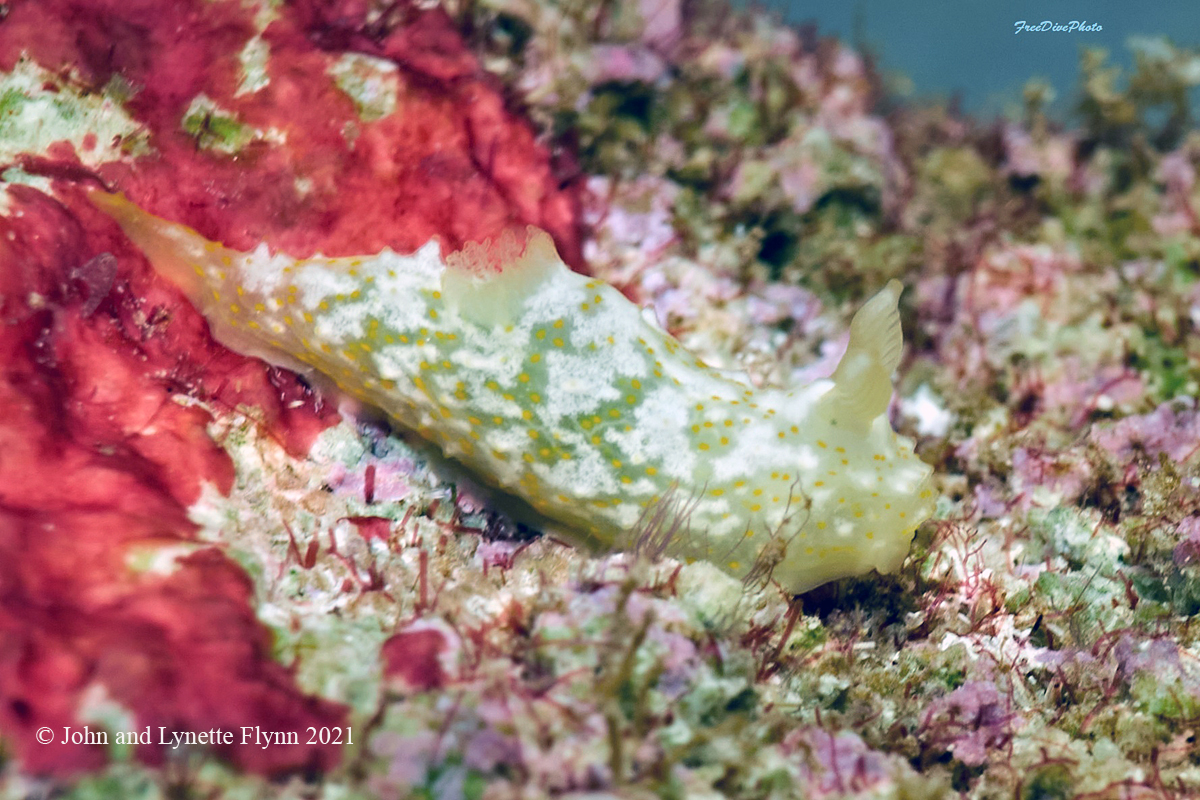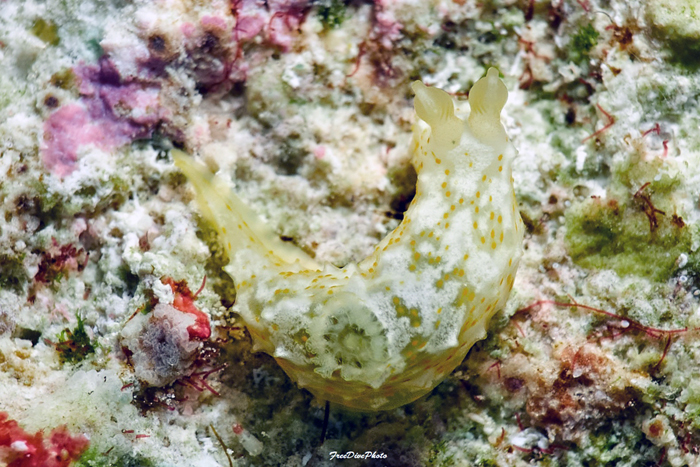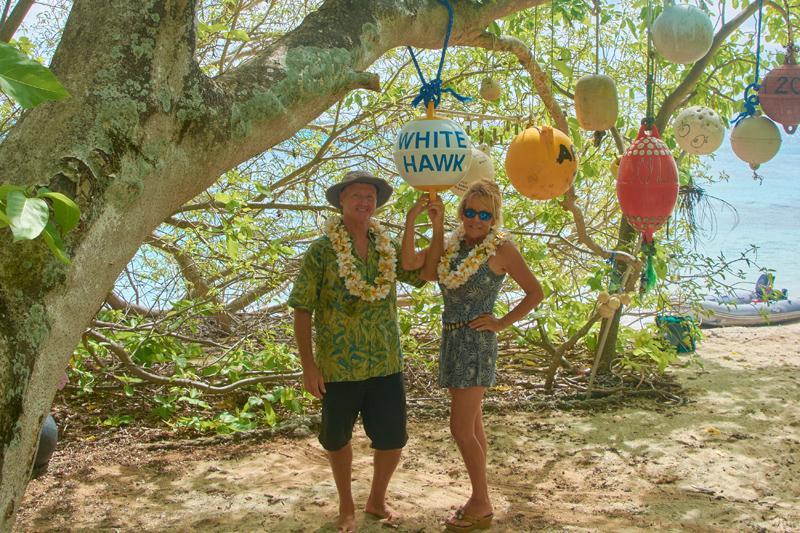 |
Image courtesy of John and Lynette Flynn
Majuro atoll in the Marshall Islands

|
Gymnodoris sp. 3 (undesribed) Members of the dorid family Gymnodorididae are a poorly known bunch. One can see that looking at NSSI second edition which contains 61 undescribed species. Some are large and more easily identified, while the small ones drive me crazy. A bunch of them are white all looking alike with orange specks. Some have a complete circle of gill branches while in other the gill branches are in an arc or line. John and Lynette's specimen from Majuro, Marshall Islands is one of the small ones that is turning my hair grey. It was only 10 mm long. In their photos the gill looks like a complete circle, but examining the dorsal papillae and coloration it perfectly matches G. sp. 3 in NSSI second edition. Although we describe the gill circle as incomplete in the book, this may be an artifact of our photo angle. It really is G. sp. 3, or a look-a-like. One more confusing species for the Gymnodoris clan. Dave Behrens Sammamish, WA 98074 Aug., 2021 Send Dave email at davidwbehrens@gmail.com |
John and Lynette Flynn at the "clubhouse" of the Rongerik Yacht Club.
Rongerik is an uninhabited atoll in the Marshall Islands and to join the club you have to find some debris on the shore,
put your boat name on it, and hang it in the open air clubhouse.

We are John & Lynette Flynn, full time live-aboard cruisers and free-dive photographers who sailed our 46' boat "White Hawk" out of San Diego in 2014 and have been cruising the Pacific ever since. We are currently "stuck" in the Marshall Islands due to COVID border closures, but we have been enjoying our time here hunting Opisthobranchs in shallow water from 0.5 to 5 meters. We are currently shooting with Sony RX100V's in Nauticam housings with CMC-1 wet lenses, SOLA Video Pro lights, and a Sea & Sea YS-D3 strobe. Last year we photographed 51 species of Opisthobranch at Rongelap Atoll, and we are currently at over 100 species of Opisthobranch photographed at Majuro Atoll, including our first-ever discovery of a previously unknown species, a new Unidentia. We still shoot other animals but we are now full-fledged "nudiholics." Our motto is: "If you don't go - you don't know. If you don't look - you don't see."
Send John and Lynette mail at svwhitehawk@yahoo.com |

Attention all you Sluggers, and you know who you are! The NSSI 2nd edition is now available in ebook PDF and book form . The hard back version will become available Nov. 1st. Both will cost $65 (individually). You will need to jump through a few hoops to get the electronic version as pdf distribution is protected by Adobe ID!! Please read the following to enable reading your electronic purchase! This new 2nd Edition is updated and reorganized, including 185 new species. Among other features, the new edition includes additional photographs of species, an identification key, and an up-to-date classification reflecting the latest evolutionary relationships. The Indo-Pacific represents the largest expanse of tropical ocean in the world, stretching from the Indian Ocean coast of southern Africa and the Red Sea to the central Pacific of the Hawaiian Islands, Easter Island and the Marquesas. This region supports the most diverse marine fauna of any place in the world for most groups of marine organisms. The nudibranchs and sea slugs are no exception to this rule; there are about 3,000 described species of these organisms in the world and at least 40% of these have been found exclusively in the Indo-Pacific tropics. This book illustrates 2,138 Indo-Pacific nudibranchs and sea slugs, including many undescribed species.
|

|
